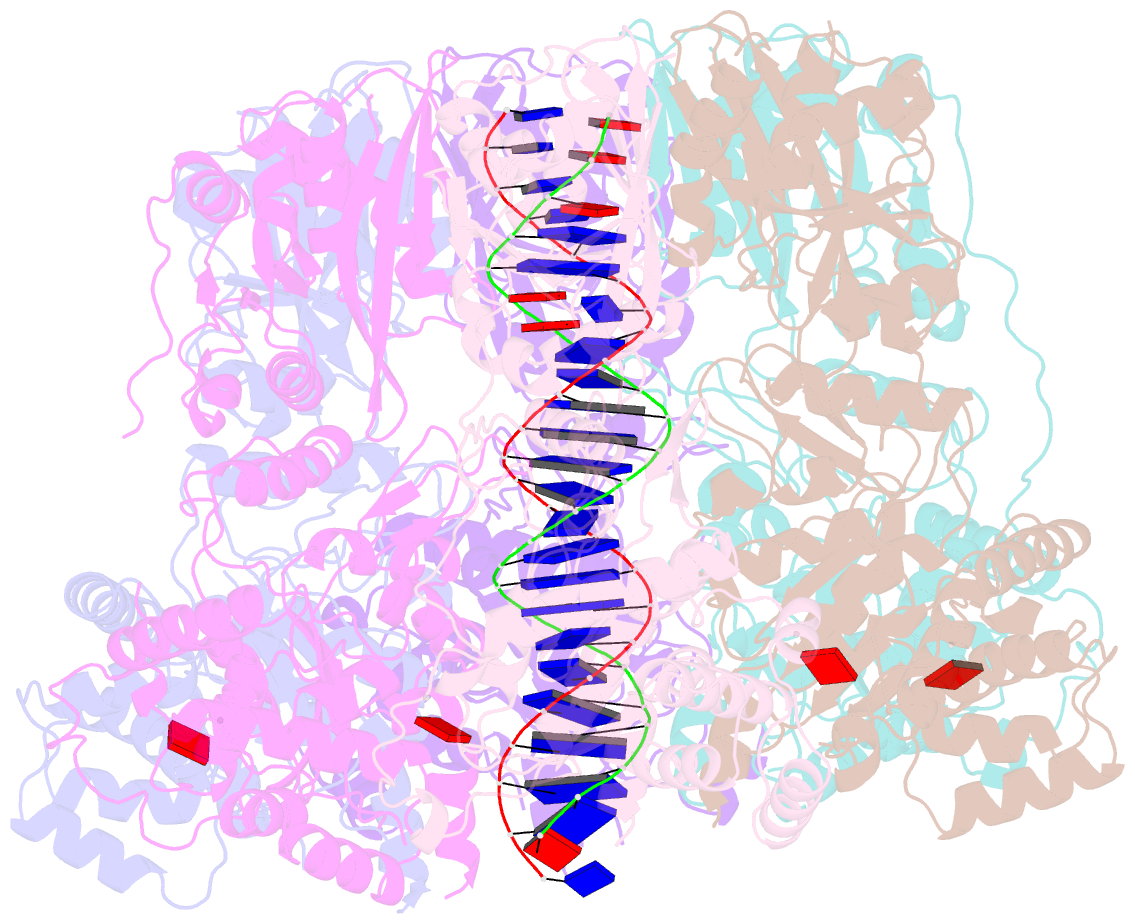Summary information and primary citation
- PDB-id
- 8rxd; SNAP-derived features in text and JSON formats;
DNAproDB
- Class
- DNA binding protein
- Method
- cryo-EM (3.13 Å)
- Summary
- Comm helicase from legionella pneumophila, coordinating dsDNA and amp-pnp
- Reference
- Rosa LT, Vernhes E, Soulet AL, Polard P, Fronzes R (2024): "Structural insights into the mechanism of DNA branch migration during homologous recombination in bacteria." Embo J. doi: 10.1038/s44318-024-00264-5.
- Abstract
- Some DNA helicases play central and specific roles in genome maintenance and plasticity through their branch migration activity in different pathways of homologous recombination. RadA is a highly conserved bacterial helicase involved in DNA repair throughout all bacterial species. In Gram-positive Firmicutes, it also has a role in natural transformation, while in Gram-negative bacteria, ComM is the canonical transformation-specific helicase. Both RadA and ComM helicases form hexameric rings and use ATP hydrolysis as an energy source to propel themselves along DNA. In this study, we present the cryoEM structures of RadA and ComM interacting with DNA and ATP analogs. These structures reveal important molecular interactions that couple ATP hydrolysis and DNA binding in RadA, as well as the role of the Lon protease-like domain, shared by RadA and ComM, in this process. Taken together, these results provide new molecular insights into the mechanisms of DNA branch migration in different pathways of homologous recombination.





